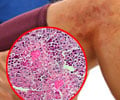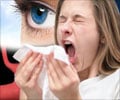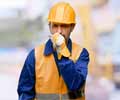A new study suggests that babies born in the high mould season are at increased risk of developing early symptoms of asthma.
A new study suggests that babies born in the high mould season are at increased risk of developing early symptoms of asthma.
Researchers at the University of California, Berkeley found that newborns whose first few months of life coincide with high pollen and mould seasons have three times the odds of developing wheezing, often an early sign of asthma, by age 2 compared with those born at other times of the year.The study results have been reported online in the journal Thorax.
''In our study, we took a different tack to understand the link between month of birth and asthma by considering ambient concentrations of fungal spores and pollen, which follow distinct seasonal patterns,'' said Kim Harley, associate director of health effects research at UC Berkeley's Center for Children's Environmental Health Research and lead author of the new study.
''Until our paper, there were very little data about exposure to allergens in the air, which we know can trigger symptoms for those who already have asthma. This is the first study to look at the potential role of early life exposure to multiple outdoor fungal and pollen groups in the development of asthma,'' the expert added.
To reach the conclusion, the researchers examined 514 children born in 1999 and 2000 in California's Salinas Valley, a region with mild, rainy winters and dry summers.
They identified 27 spore and 48 pollen groups in the study, recording the average daily concentrations for the groups that accounted for more than 3 percent of the total during the first three months of life for each child in the study.
Advertisement
High concentrations of two groups of fungal spores, basidiospores and ascospores - emitted from such sources as mushrooms, moulds, and rusts on plants - had a significant association with early wheezing at age 2. Basidiospores and ascospores are common outdoor allergen-bearing particles that are more prevalent during periods of rain or high humidity.
Advertisement
The researchers noted that definitive diagnoses of asthma are generally not made until children are older, often around school age. As many as 40 percent of children who wheeze early in life may go on to have childhood asthma, especially if they have other allergic symptoms, according to the researchers.
They are continuing to follow the children in the study and expect to have findings from lung function tests in another year or two.
''We are not in position to say conclusively why some children develop asthma, or to even suggest precautionary measures to help babies born in the fall and winter,'' said Dr. Ira Tager, UC Berkeley professor of epidemiology and senior author of the study.
''We already know that family history is a major risk factor for developing asthma, but the role environmental factors play is still being fleshed out. What this study does is provide valuable clues about airborne allergens that are worth exploring further,'' the researcher added.
Source-ANI
ARU/L













